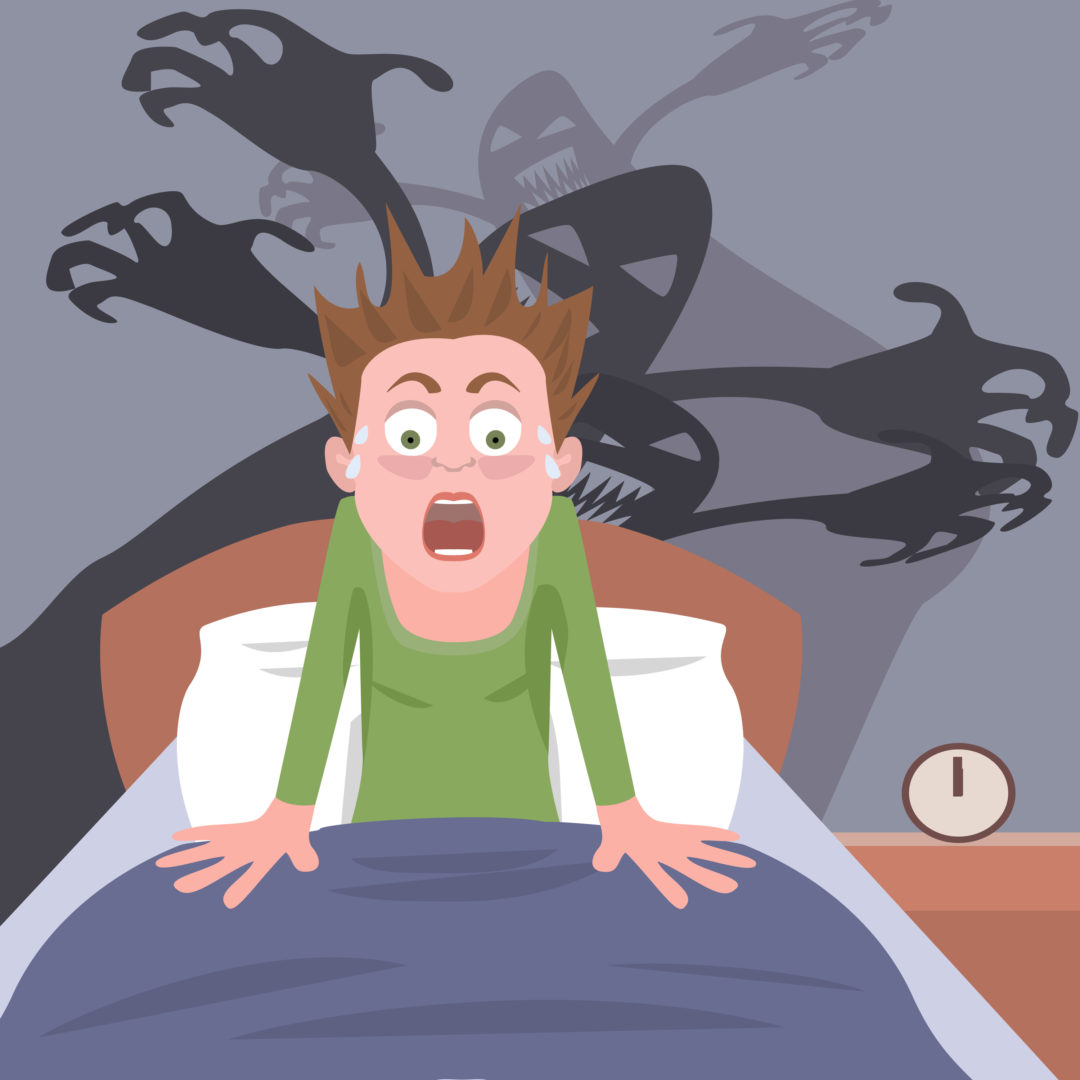Ever have that dream where you are in crazy Los Angeles traffic and need to be somewhere but can’t get there and then… you wake up to a migraine? Out in the desert outside of Phoenix or Las Vegas and it’s crazy hot and you cant get cool or water and you wake up to a migraine?
A few days ago I saw a social media post where a woman was discussing the night before a migraine. She reported that she knows a migraine is coming on when she has bad and vivid dreams the night before. Her thought was that the dreams were a preview of sorts and that the process of the onset of a migraine caused a restless night of sleep before the pain hit in the morning. I’m thinking that the egg came before the chicken rather than the other way around.
Many of us have long known that stress is a big migraine trigger. Stress brings along a great many reasons for us to feel like a migraine would be related- high blood pressure, emotional worrying and tight muscles. Many migraine patients go about extensive measures to reduce stress and to avoid stressful situations. Acupuncture, meditation, anti-depressants, and beta blockers are all used by migraine patients to reduce and avoid stress. Patients do these things because they often work, and they consciously know that by relaxing and reducing stress, it is less likely that they will experience migraine pain.
But what if you are asleep? A bad dream can come along and while you are asleep, all of the symptoms of excessive stress can occur. Your blood pressure goes up. You get emotionally stressed. And most importantly, your muscles get tight. Have you ever woken up with a headache because you “slept wrong”? Same thing. When you sleep with your head in a bad position, your neck tenses up as it fights to control your head and return it to a more comfortable spot. When you have a bad dream, your stress causes your neck muscles to get tight as a physical symptom of your perceived distress.
When neck muscles tighten up for any reason, during sleep or waking hours, the opportunity for a migraine headache trigger increases dramatically. This is because the nerves that run through the muscles of your neck, particularly the ones that manifest stress, get irritated, inflamed, and compressed when the tissue around them tightens up. There are several sets of nerves that can be troublesome here, but in particular, it is most often the occipital nerves that are problematic during stressful times.
There are three occipital nerves that we know contribute to migraine headaches. The greater occipital nerve is the largest of the three, and courses from the cervical spine through several muscle layers that include the splenius capitus as well as the trapezius muscles. The function of the greater occipital nerve is to supply feeling to a large part of the scalp and the back of the head. The third occipital nerve is near the greater one, just a bit farther down the neck and similarly travels through the same muscles. While this nerve is much smaller than it’s greater neighbor, it can also be a contributor to migraine pain. Lastly, the lesser occipital nerve wraps around a muscle called the sternocleidomastoid muscle. This muscle is a long one that runs from the back of the skull around each side of the neck and connects to the central collar bone on each side. This muscle helps control both head position as well as head rotation, and the stress from a bad dream or sleeping in the wrong position can cause this muscle to spasm. Spasm of the sternocleidomastoid muscle puts stress on the lesser occipital nerve, and this is a well-known trigger of migraine pain. It is certainly well known by me because it is what gives rise to my migraines after a night of bad sleep.
So how does migraine surgery factor into any and all of these migraine syndromes? In migraine surgery, tissue around the nerves that are known to trigger migraine headaches is released in order that less stress and compression is put on the problematic nerve. By reducing the compression on the nerve, the distress signals that an inflamed and irritated nerve sends back to the brain is prevented. It is this signal that begins the cascade of events that triggers a migraine headache, and as such preventing this signal is the key to the success of migraine headache surgery. Over 90% of the time, patients that have migraine surgery have a significant improvement in their migraine headache symptoms. Over 30% of patients who have this surgery never have another migraine again in their lives.
So it seems that it is not the onset of a migraine that causes patients to have a rough night of bad dreams. Instead, it is the stress of having bad dreams or the neck stress of dealing with a night of “sleeping wrong” that brings on the triggers of a migraine headache through muscle tightening around occipital nerves. By decreasing the compression around these nerves, inflammation is decreased and distress signals to the brain are decreased and migraines are decreased as well. While we can’t reduce stress or reduce bad dreams, we can make you feel better in the morning with migraine surgery.


